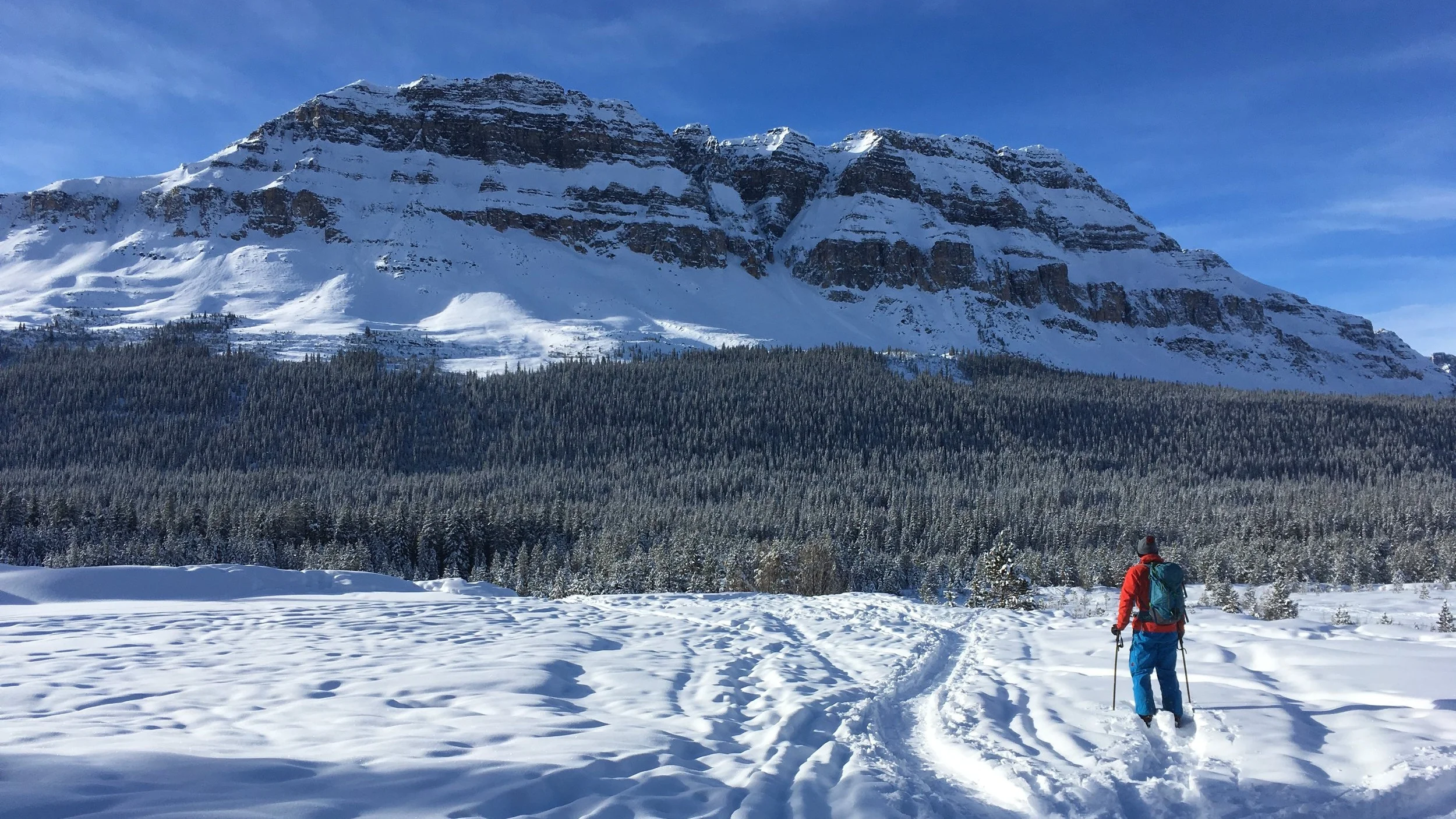Ski Touring - Basic Recovery for Uphill Adventures
/After a day of going uphill, the repeated motions of an uptrack can cause some stiffness. Muscles contracting repeatedly are undergoing a certain amount of stress and if there is anything the body is skilled at, it is adapting. When muscles and tissues undergo stress, the body adapts by reinforcing them. This may be in the form of increased strength or adhesions to support the structures undergoing stress.
Consider a scenario where a bridge suddenly has many more cars passing over, inducing extra load. If the bridge was not built for this many vehicles, it must be reinforced in some way. Before a restructuring can happen, someone must slap on whatever materials they can find to hold it together in the meantime. Similarly, your body will reinforce areas of stress with tissues and adhesions that do support the forces it is undergoing, but they may not be productive in the long term or for movement overall. In the short term, there is reduced glide between muscles and often reduced range of motion or availability of space for muscles to contract. If you are a science fan, this happens according to Wolff’s law – Form Follows Function. Over time, when these muscles and structures are not operating in an ideal pattern, they can cause dysfunction in movement and overcompensation and overloading by other structures. Less than ideal for your next uphill adventure!
Key message: It is important to do some recovery work so that adaptations to training stresses and uphill days can be as productive as possible. This will help to maximize injury prevention and fitness improvements so your winter activities are unimpeded.
Below are some options for a simple recovery routine, ideally completed after touring or an uphill day, at minimum twice a week. When completing each one, there should never be extreme pain or nerve symptoms such as tingling, numbness, burning, etc. Do not force anything into relaxing or opening. If you take a slightly more passive approach and think like you are asking tissues to relax and open, the body will respond in a more positive way compared to jamming or prying things apart.
Equipment needed:
Lacrosse or massage ball
Yoga mat or piece of floor
Chest/Shoulder opener
Try multiple arm positions from a “T” arm position to reaching overhead on the floor
Lat rolling
Try multiple places just under the armpit and in front of the shoulder blade
Hip Flexor Stretch
Key: make sure to tuck the hips under so the low back is not arching during the stretch. With both of these stretches, find a place where you are experiencing a good stretch and breathe patiently until you feel the stretch area sort of melt open. Usually about 30-60s
Glute Roll & Stretch
For those who are less flexible, this stretch is easier to do in a supine position
For those who are more flexible, this stretch can be done in a seated position
Calf Roll & Stretch
When completed regularly, the above recovery techniques will help the body to move more fluidly and with freedom. The objective being to reduce the risk of injuries and improve performance during activities!
Please let us know if you have any questions about the above information or would like any additional suggestions for recovery and mobility strategies.
Youtube links and sources below:
https://www.youtube.com/watch?v=HQLy0CUG4i0
https://www.youtube.com/watch?v=NBjhd3RftOY
https://www.youtube.com/watch?v=oy8j0Ctcld4
https://www.youtube.com/watch?v=l3ZanLgAxM4
https://www.youtube.com/watch?v=EkbkRwqiZRY
https://www.youtube.com/watch?v=mQMEX_nHFR0
https://www.youtube.com/watch?v=2E8WWX4cOc4




